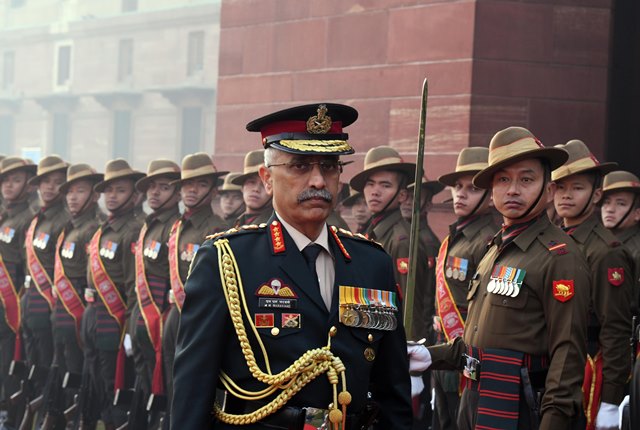Tensions between India and China at the Line of Actual Control have reached a height not seen for 43 years. Both have been engaged in a military standoff at multiple locations, for over a month now at India’s northern border with a sudden escalation in the Galwan Valley region on 16th June 2020 resulting in death of some 20 Indian soldiers.
The situation has reached this level as a result of Chinese incursions
across the Line of Actual (LAC), which is how the border is known pending resolution
of boundary and territorial disputes between the two countries. The situation
also is a result of a complicated and mistrustful relationship as they have not
been able to agree on the definition and delimitation of the boundary over the
last 60 years or so.
The demarcation of the boundary on the ground and its administration are
subsequent stages in the boundary making process. Chinese incursions into
India’s territory or into territory which India deems extremely strategic to
control have become more frequent over the last decade or so. The Chinese
military activity has been mounted at a time when in India the CoVID19 virus
infections are reaching peak numbers.
Such incursions leading to military constructions and installations are
reminiscent of similar Chinese tactics of gradual expansion of the Exclusive
Economic Zone and territorial annexation in the South China Sea (SCS). The
international community has responded to the Chinese maneuvers in SCS with
statements of support for the affected parties. United States (US), the foremost
military power in the world and present in the region since WW II has responded
with increased reconnaissance and military cooperation to deter the Chinese.
In regard to Chinese attitude and belligerence over land boundaries, however,
there have hardly been any voices of concern being raised by the international
community. Donald Trump’s offer to PM Modi to mediate between the two sides
should only be construed as only an offer of mediation, not anything more. This
offer, however, does impact the geopolitical dynamics in the South Asian
neighbourhood and larger Southern Asia, where China has important economic
stakes and leverage.
At the same time, Trump’s offer will have zero effect on the current
negotiations on the LAC between India and China. India has responded to the US
President’s call with maturity and poise and signaled with intent to Beijing
that the matter should be resolved bilaterally. Perhaps, this is one more of
many hints to China that India is willing and able to withstand an aggressive
China where its sovereign territoriality is threatened.
Such actions are consistent with India’s refusal to be a part of
Beijing’s Belt and Road Initiative (BRI). India did not join the BRI because of
its apprehensions over the China-Pakistan Economic Corridor (CPEC) passing
through the disputed territory of Pakistan Occupied Kashmir (PoK). Aksai Chin
where Indian and Chinese forces face each other in the current standoff has a
boundary with PoK.
Further, the revocation of Article 370 from Jammu and Kashmir and
subsequent reorganization of the state into two Union Territories has not gone
down well with either Pakistan or China. The LAC forms a boundary between India
and China in Ladakh, so the Chinese protested in August 2019, citing that India
has unilaterally altered the status quo in an area which is disputed.
Last week, the Chinese embassy in Pakistan issued a statement indicating
that Chinese actions at the LAC are related to both the repeal of Article 370
as well as the creation of transport infrastructure by India and they impact
the ground situation at the LAC. New Delhi’s response on revocation of Article
370 has been very categorical, that India can carry out any activity on Indian
soil and does not expect its neighbours to meddle in its internal matters.
The international response, or approach to such Chinese ingress remains
to be seen as the frequency of incursions into Indian territory increases and
China gradually starts to claim thin slivers of territory which are otherwise
disputed. Realistically any statements in support of the Indian standpoint,
from the international community, however, will be determined by the simple
fact of Chinese economic and financial clout in the international system.
But there is another reason on why the international community may be reluctant to throw its weight in the issue. The international community has been vocal about the issues in SCS because the disputing parties have approached the Permanent Court of Arbitration (PCA) and have referred to the United Nations Convention on the Law of the Sea III. In the case of territorial disputes India has consistently maintained the principle of bilateral negotiations and hence cannot expect overt support and help.
Direct support to Indian stance could have been expected from its
smaller South Asian neighbours, but they too seem to have been weighed down by
the impact of Chinese investments, trade and the generous lines of credit.
Nepal has gone one step further as it has included hitherto disputed territory
with India on its western expanse in its official map, through legislation in
parliament. It is argued in policy circles, that this has been done with
Chinese collusion.
Given all this therefore, it is not for the first time that the much
touted ‘Neighbourhood First’ policy of PM Modi looks under strain. India, however,
should persevere to deepen ties with its immediate neighbours and make most of the
recent dip in Chinese reputation on account of the origin of CoVID19 and its aftermath.
This can be achieved by astute diplomacy and apprising the international
community of the Chinese belligerence in the region.
No doubt the experts at South Block will be engaging all their skills
and intellect to outmanoeuvre
China and reclaim its premier status in the South Asian region as well as fend
off Chinese adventures.








